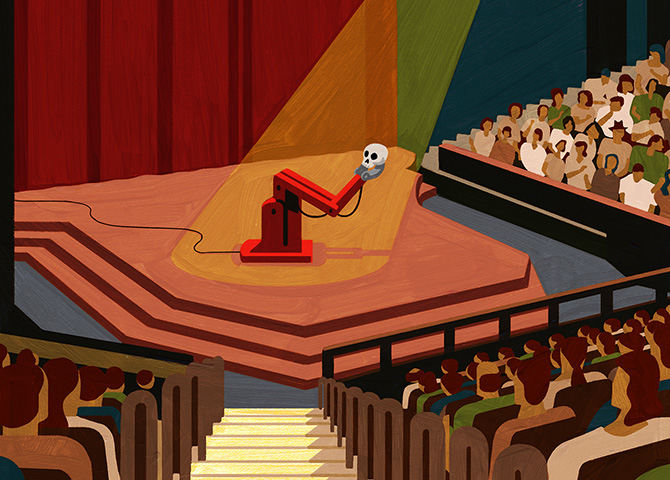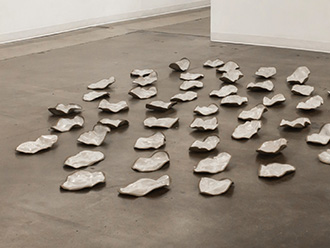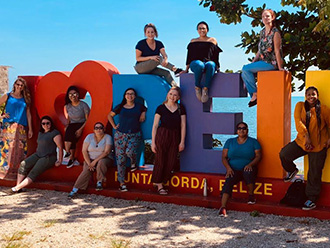The word “robot” was originally conceived for the play R.U.R., Rossum’s Universal Robots (1920) by Czech playwright Karel Čapek. In that play, in perhaps a foreshadowing of our uneasy relationship with technology, robots overthrow their human overlords. Hollywood has continued the tradition of framing human-robot relationships as fraught.
However, the front-line approach to human-robot collaboration in 2020 is a far different story from the version presented by Hollywood. At UTA, social robots are used for social good. Through purposeful and rigorous research from diverse disciplines such as liberal arts, theater arts, social work, engineering, nursing, and psychology, among many others, robots are programmed with theatrical authenticity to help address significant human problems.
Applying theater methodologies to artificial intelligence and social robotics creates trust and a potentially strong emotional interaction for the human. This is accomplished using theater techniques that humanize the design, behavior, and relational connection of the robot. Social awareness and empathetic response in robotics platforms are key. Theater performance is built on engagement, empathy, emotion, embodiment, and communication through a human-human model. I translate the human-human model to a human-robot model, creating a uniquely authentic experience of emotion.
The social robots of the Emotional Robotics Living Lab at UTA are programmed to perform for their audience much the same way a human actor rehearses and performs in a play. It is my expertise to create the human-robot framework as truthfully and honestly as its traditional theater model. Performance methodology, sensory data work, live field study, and relational narratives are examined to create a unique experience of emotion.
Current research work includes developing an enhanced Shakespeare-acting robot, examining prospective memory and exercise goals in older adults, providing resilience through original narratives for young adults and their caretakers, and tackling social isolation and loneliness in humans. All the research is interdisciplinary and seeks to solve problems that one perspective alone does not provide.
As we work through the complexities of COVID-19, it is clear that social robots may be able to connect arts and humanities-driven content to humans at a time when human contact is not possible—and in doing so, help reduce the stress of social isolation.
ABOUT THE AUTHOR

Julienne A. Greer is an interdisciplinary scholar and artist working at the emerging intersection of theatre and social robotics. As director of the Emotional Robotics Living Lab at UTA, her primary focus is human-robot interaction in order to “humanize” social robots to the nuances and subtleties of human behavior and performance for use in interdisciplinary research. She is a passionate advocate for undergraduate and graduate research for a future that may not have even been conceived of yet, but will most certainly impact our lives and how technology and the arts collaborate.



